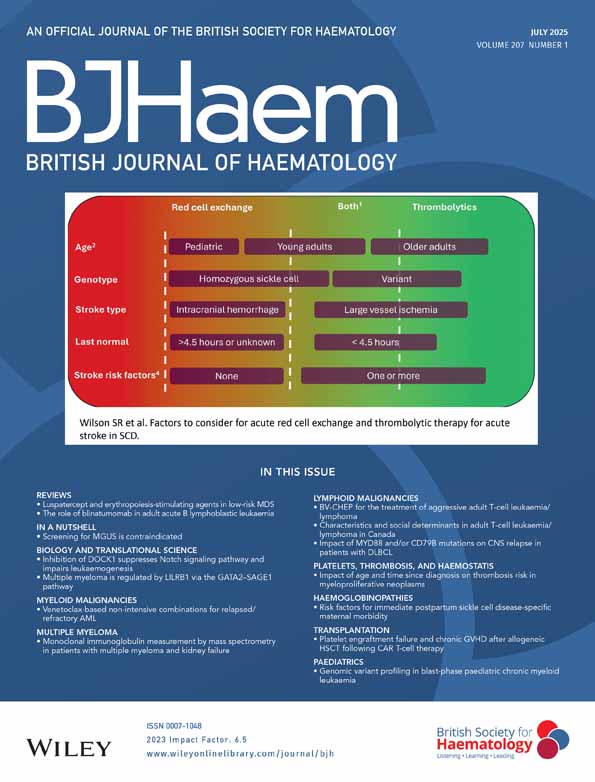Flavopiridol circumvents Bcl-2 family mediated inhibition of apoptosis and drug resistance in B-cell chronic lymphocytic leukaemia
Abstract
Flavopiridol, a synthetic flavone, is currently under clinical investigation for the treatment of B-cell chronic lymphocytic leukaemia (B-CLL). In this study, we examined the in vitro effects of flavopiridol and fludarabine on B-CLL cells from 64 patients (36 treated and 28 untreated) in terms of apoptosis induction and Bcl-2 family expression. Both flavopiridol and fludarabine induced apoptosis in all the samples tested with mean LD50 values (± SD) of 59·7 nmol/l (± 36·5) and 6·2 μmol/l (± 7·5) respectively. Mean flavopiridol LD50 values were not significantly different between the treated and untreated patient groups (P = 0·35), whereas the fludarabine LD50 values were significantly higher in the previously treated patient group (P = 0·01). Bcl-2 and Mcl-1 expression were downregulated in both flavopiridol and fludarabine-induced apoptotic cells, but the increase in Bax expression that accompanied fludarabine-induced apoptosis was not evident in flavopiridol-treated cells. In addition, Bcl-2:Bax ratios were not predictive of flavopiridol cytotoxicity (P = 0·82), whereas they were highly predictive of in vitro responsiveness to fludarabine (P = 0·001). Overall, these findings suggest that flavopiridol exerts its cytotoxic effect through a novel cell-death pathway that is not subject to the Bcl-2 family mediated resistance mechanisms that reduce the efficacy of many conventional chemotherapeutic drugs.




